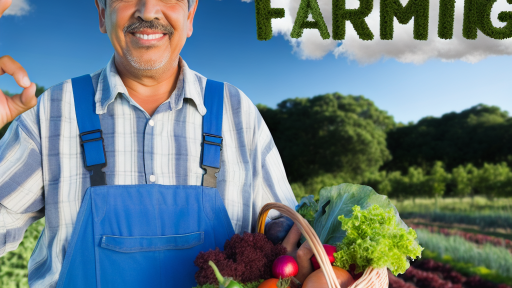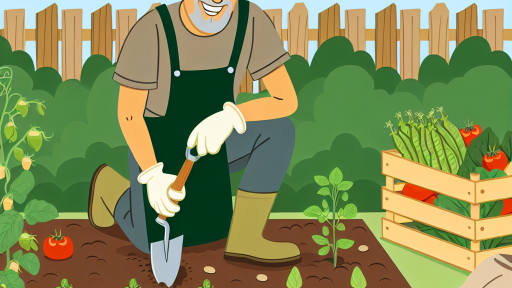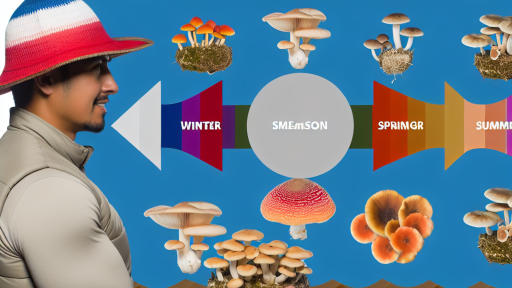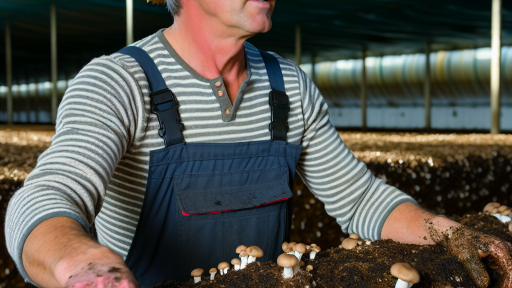Introduction to Perennial Vegetables
Concepts of Perennial Vegetables
Perennial vegetables are plants that return year after year.
They differ significantly from annual vegetables, which must be replanted each season.
These vegetables establish deep root systems for better nutrient absorption.
As a result, they require less maintenance over time.
Moreover, many perennial vegetables can tolerate a range of soil conditions.
This adaptability often leads to lower water requirements compared to annuals.
Incorporating these plants creates a stable ecosystem in gardens.
Benefits of Growing Perennial Vegetables
Growing perennial vegetables offers numerous environmental benefits.
First, they improve soil structure through their extensive root systems.
This structure enhances water retention and promotes beneficial microbial activity.
Second, perennial vegetables can reduce soil erosion significantly.
Their roots hold the soil together, minimizing runoff during heavy rains.
Additionally, these vegetables can support local wildlife.
Many perennial plants attract pollinators like bees and butterflies.
This promotes biodiversity and helps maintain healthy ecosystems.
Transform Your Agribusiness
Unlock your farm's potential with expert advice tailored to your needs. Get actionable steps that drive real results.
Get StartedFrom a culinary perspective, perennial vegetables introduce unique flavors.
Many have distinct tastes and textures not commonly found in annuals.
Examples include asparagus, rhubarb, and sorrel.
Furthermore, once established, perennial vegetables save time and effort.
Gardeners spend less time on planting, weeding, and watering.
Ultimately, they provide a sustainable and productive gardening solution.
Top 10 Perennial Vegetables for Edible Landscapes
Perennial vegetables thrive year after year.
They reduce the need for replanting each season.
This sustainability makes them ideal for edible landscapes.
Why Choose Perennial Vegetables?
Perennial vegetables offer numerous benefits.
They improve soil health over time.
Furthermore, they require less labor compared to annuals.
Moreover, they provide continuous harvests throughout the season.
Asparagus
Asparagus is a nutrient-rich perennial vegetable.
It grows in a variety of climates and soils.
Harvest begins in early spring, lasting several weeks.
This vegetable also requires minimal maintenance once established.
Rhubarb
Rhubarb is another great choice for edible landscapes.
It has a unique tart flavor, perfect for pies and jams.
This perennial thrives in cooler climates.
Rhubarb is easy to grow and provides ample harvests.
Jerusalem Artichoke
Jerusalem artichoke is a versatile and hardy option.
It offers edible tubers rich in inulin, a prebiotic fiber.
This vegetable prefers full sun and well-drained soil.
Showcase Your Farming Business
Publish your professional farming services profile on our blog for a one-time fee of $200 and reach a dedicated audience of farmers and agribusiness owners.
Publish Your ProfileOnce planted, it can flourish for years.
Sea Kale
Sea kale is both ornamental and edible.
It prefers coastal areas but adapts well to various soils.
This perennial has tender shoots and flavorful leaves.
It adds visual interest to the garden throughout the year.
Perennial Broccoli
Perennial broccoli is a rare but delectable vegetable.
It provides tender, young shoots for harvesting.
This plant thrives in well-drained, fertile soil.
Moreover, it produces for multiple seasons, offering great value.
Chives
Chives are a flavorful addition to any garden.
These herbaceous perennials are easy to cultivate.
They produce fragrant green leaves and purple flowers.
Use chives to enhance salads, soups, and other dishes.
Good King Henry
Good King Henry is a lesser-known perennial vegetable.
It resembles spinach and is highly nutritious.
This plant prefers partial shade and moist soil.
Once established, it offers foliage for many years.
Oyster Plant
Oyster plant, or salsify, has a unique flavor profile.
The roots resemble oysters, hence the name.
This perennial is cold-hardy and thrives in various soils.
Oyster plant provides a special addition to any edible landscape.
Perennial Spinach
Perennial spinach is an excellent leafy green option.
It grows easily in containers or garden beds.
This vegetable tolerates heat better than traditional spinach.
Additionally, it yields throughout the growing season.
Integrating Perennial Vegetables in Traditional Gardening Practices
Benefits of Perennial Vegetables
Perennial vegetables offer numerous advantages for gardeners.
They require less maintenance compared to annual vegetables.
Once established, these plants grow back year after year.
This reduces the need for replanting and saves time.
Additionally, they contribute to soil health over time.
A greater diversity of plants fosters a resilient ecosystem.
Designing Edible Landscapes
Integrating perennial vegetables into landscape design enhances aesthetic value.
Consider planting them alongside ornamental plants.
For example, mixing chard with flowering shrubs creates visual appeal.
Create layers in your garden with different heights of plants.
This layering maximizes space and allows for better sun exposure.
Choosing the Right Perennials
Selecting suitable perennial vegetables is crucial for success.
- Asparagus is a popular choice due to its long lifespan.
- Rhubarb provides unique flavors and grows well in various climates.
- Perennial kale offers nutritious greens throughout the growing season.
Research your local climate to find the best varieties.
Consult with local gardening experts or resources for recommendations.
Implementing Companion Planting
Companion planting can enhance the growth of perennial vegetables.
Showcase Your Farming Business
Publish your professional farming services profile on our blog for a one-time fee of $200 and reach a dedicated audience of farmers and agribusiness owners.
Publish Your ProfilePairing different plants can help deter pests naturally.
For instance, planting garlic near asparagus can reduce insect damage.
Plan your garden layout to encourage these beneficial relationships.
This sustainable method promotes a healthier garden environment.
Maintaining Perennial Vegetables
Caring for perennial vegetables involves specific maintenance practices.
Regular weeding ensures that your plants receive necessary nutrients.
Mulching helps retain moisture and suppresses unwanted plants.
Fertilizing in early spring promotes vigorous growth.
Additionally, monitor for pests and diseases frequently.
Learn More: Setting Up A Sustainable Container Farm
Soil and Environmental Considerations for Planting Perennials
Understanding Soil Quality
Good soil quality forms the foundation for healthy perennial vegetables.
Start by testing your soil for pH and nutrient levels.
Amend your soil with organic matter to improve fertility.
Consider adding compost or well-rotted manure to enhance soil structure.
Selecting the Right Location
Choose a site that receives adequate sunlight for optimal growth.
Many perennial vegetables thrive in full sun, needing six to eight hours daily.
Ensure good drainage to prevent root rot and promote healthy plants.
Observe wind patterns, as sheltered areas can protect delicate plants.
Water Management
Water availability is crucial in establishing and maintaining perennials.
Install a drip irrigation system to provide consistent moisture.
Mulching can help retain soil moisture and suppress weeds.
Monitor rainfall and adjust irrigation accordingly to avoid overwatering.
Evaluating Climate Adaptability
Know your hardiness zone to select appropriate perennial varieties.
Research drought resistance features if you are in a dry region.
Consider frost dates when planning planting times for tender perennials.
Pest and Disease Management
Healthy soil leads to resilient plants less susceptible to pests.
Implement integrated pest management strategies for effective control.
Encourage beneficial insects by planting diverse species nearby.
Regularly check for signs of disease to promptly address issues.
Find Out More: Cost-Effective Methods for Mushroom Production
Maintenance and Care Guidelines for Perennial Vegetables
Soil Preparation
Prepare the soil before planting perennial vegetables.
Ensure it is rich in organic matter.
Use compost to enhance soil structure and fertility.
Watering Practices
Water young plants regularly to promote root development.
Once established, many perennials tolerate dry spells.
Adjust watering based on rainfall and temperature.
Fertilization
Apply a balanced fertilizer in early spring.
Organic options, like fish emulsion or bone meal, work well.
Monitor plant growth and adjust fertilization accordingly.
Pest and Disease Management
Inspect plants regularly for pests and diseases.
Showcase Your Farming Business
Publish your professional farming services profile on our blog for a one-time fee of $200 and reach a dedicated audience of farmers and agribusiness owners.
Publish Your ProfileEncourage beneficial insects to control pest populations.
Use organic pest control methods whenever possible.
Pruning and Harvesting
Prune perennials to maintain shape and encourage growth.
Harvest vegetables at their peak for best flavor.
Use selective pruning to avoid removing too much foliage.
Winter Care
Mulch perennial vegetables before winter arrives.
This helps protect the roots from freezing temperatures.
Remove any dead or diseased plant material in late fall.
Learn More: Soil Management In Urban Gardening
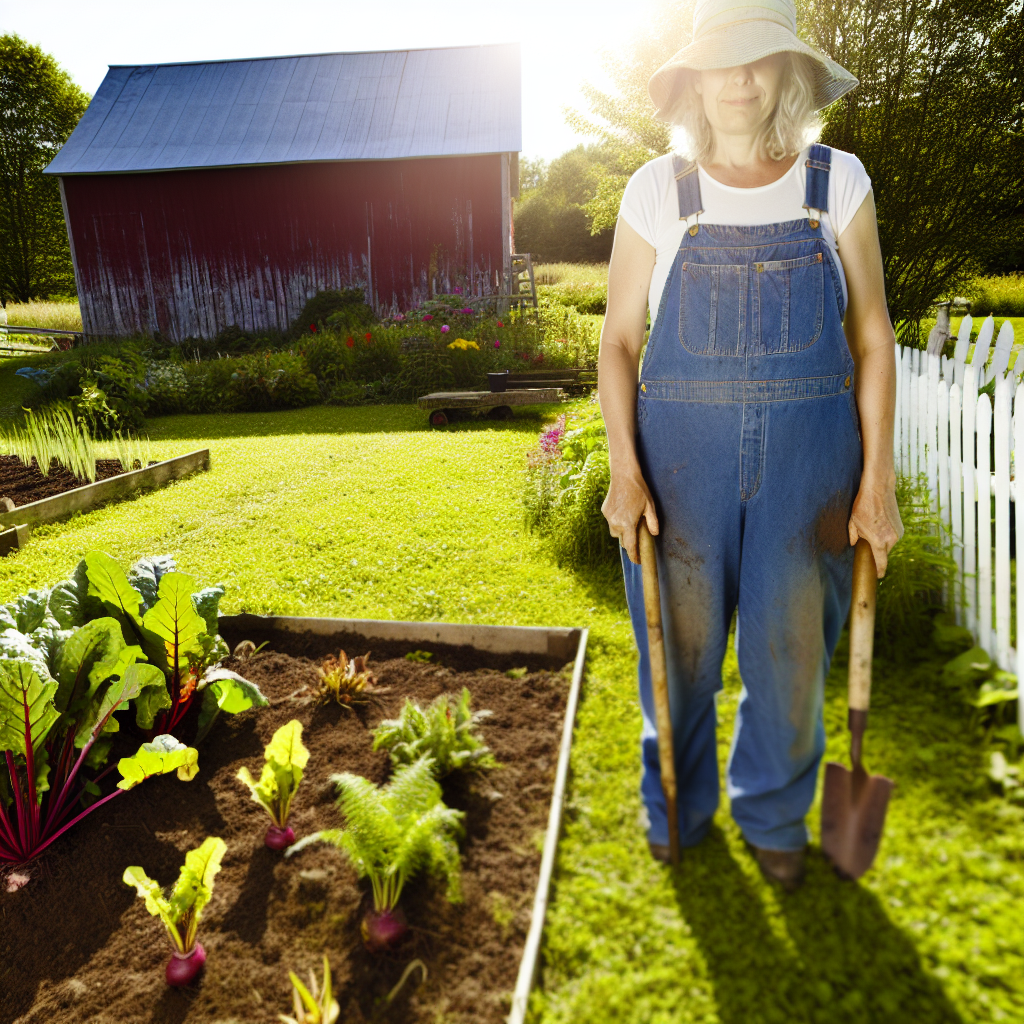
Seasonal Harvesting: What to Expect from Your Perennial Garden
Understanding Perennial Vegetables
Perennial vegetables are plants that return year after year.
They provide harvestable yields without needing to be replanted.
Incorporating these plants into your garden offers sustainability.
Spring Harvests
Spring marks the beginning of many edible perennial crops.
As the weather warms, you can expect to harvest asparagus.
Rhubarb is another delicious option that thrives in spring.
Consider also the fresh greens of perennial sorrel and minstrel.
Summer Bounty
Summer produces a rich array of perennial vegetables.
Harvesting begins when plants like artichokes and comfrey mature.
Many herbs such as oregano and thyme flourish during this season.
You might also enjoy the fruits from elderberries and blueberries.
Fall Flavors
With the arrival of autumn, more perennial crops come into play.
Fall is ideal for harvesting hardy vegetables like kale and chicory.
Sweet potatoes and sunchokes can also be dug up at this time.
These crops provide nourishment before the winter frost arrives.
Winter Considerations
In winter, your options might seem limited, yet they exist.
Some perennial crops can withstand cold temperatures.
Underground vegetables like parsnips remain sweet after frost.
Additionally, certain herbs may survive mild winters with protection.
Planning for Continuous Harvests
Creating a perennial garden aims for continuous harvests.
Staggered planting ensures that crops mature at different times.
Regular maintenance will provide a year-round supply of produce.
Thus, your garden becomes not just sustainable but also productive.
Seasonal Tips and Best Practices
Monitor your plants for signs of pests or diseases regularly.
Seasonal mulching improves soil health and moisture retention.
Furthermore, rotating crops can enhance biodiversity in your garden.
Finally, engage with local gardening communities for support.
Learn More: Urban Gardening Tools Every Farmer Needs
Companion Planting: How Perennial Vegetables Work with Other Plants
Enhancing Biodiversity
Perennial vegetables play a crucial role in enhancing biodiversity in gardens.
They attract a variety of beneficial insects such as pollinators and predators.
These insects help in the natural pest control and pollination processes.
Showcase Your Farming Business
Publish your professional farming services profile on our blog for a one-time fee of $200 and reach a dedicated audience of farmers and agribusiness owners.
Publish Your ProfileMoreover, diverse plant species contribute to a more resilient ecosystem.
Improving Soil Health
Companion planting with perennial vegetables improves soil health significantly.
Their extensive root systems help prevent soil erosion and improve soil structure.
Additionally, they contribute organic matter as they die back and decompose.
This organic matter enriches the soil, promoting microbial activity.
Complementing Growth and Flavor
Some perennial vegetables complement the growth of other plants through their growth patterns.
For example, certain varieties provide shade for heat-sensitive plants.
In turn, these plants can enhance the flavor and health of nearby crops.
Tomatoes and basil illustrate a classic pairing where both thrive and taste better together.
Deterring Pests Naturally
Perennial vegetables can deter pests through their natural aromas and compounds.
Plants like garlic and chives repel aphids and other harmful insects.
By planting these alongside other crops, gardeners can minimize chemical inputs.
This approach promotes a healthier garden environment while protecting plant health.
Creating Multi-Layered Garden Spaces
Companion planting enables the creation of multi-layered garden spaces.
Perennial vegetables often grow alongside annual flowers and herbs.
This layering maximizes space and optimizes resource use like sunlight and water.
Such arrangements yield more produce and visually appealing landscapes.
Seasonal Sustainability
Many perennial vegetables provide a steady supply of food throughout the seasons.
They often outlast annual crops, allowing for continuous harvests.
This reliability promotes sustainable eating practices and minimizes waste.
As a result, gardens become productive with less effort in replanting every year.
Case Studies: Successful Edible Landscapes Using Perennial Vegetables
Urban Edible Yard in Seattle
This project transformed a typical urban yard into a thriving edible landscape.
Designed by Emma Green, it features diverse perennial vegetables.
Raised beds host asparagus, rhubarb, and perennial kale.
Fruit trees like dwarf apples complement the vegetable growth.
Importantly, Emma utilized sustainable practices throughout the design.
The results yielded fresh produce year-round.
Neighbors now admire the vibrant, functional landscape.
Community Garden Initiative in Portland
A local non-profit, Green Roots, established a community garden with perennial vegetables.
Situated on a previously unused lot, the garden brought residents together.
Participants grow rhubarb, sorrel, and Jerusalem artichokes collectively.
Workshops educate members on the benefits of perennial planting.
This initiative promotes sustainability and food security within the community.
As a result, participants enjoy access to fresh produce.
Rural Homestead in Maine
John and Lisa Stewart created an edible landscape on their homestead.
They integrated various perennial vegetables into their landscape design.
Key plants include asparagus, perennial onions, and Egyptian walking onions.
Additionally, they harvested herbs such as chives and thyme.
This garden minimizes labor while maximizing yields.
Furthermore, it enhances the family’s self-sufficiency.
Showcase Your Farming Business
Publish your professional farming services profile on our blog for a one-time fee of $200 and reach a dedicated audience of farmers and agribusiness owners.
Publish Your ProfileVisitors often seek inspiration from their successful model.
School Garden Program in Chicago
A local school initiated a garden program focusing on perennial vegetables.
The students enjoy hands-on learning experiences in gardening.
Plants like rhubarb, chives, and garlic provide valuable lessons.
This initiative fosters a deeper appreciation for healthy food.
Additionally, students learn the importance of sustainability.
The program has strengthened community ties as well.
Parents often participate, enhancing family involvement.
Commercial Edible Landscape Design in Los Angeles
EcoScape Designs transformed a corporate campus into an edible landscape.
Perennial vegetables now thrive in the space, enhancing aesthetics.
Designs include artichokes, green onions, and perennial spinach.
The landscape promotes biodiversity and enriches employee wellness.
As a result, employees benefit from fresh produce all year.
This project serves as a model for other businesses in the area.
Additional Resources
Episode 100: Edible Flowers with Rosalind Creasy
Episode 1: Citizen Gardener with Acadia Tucker & Morag Gamble …

